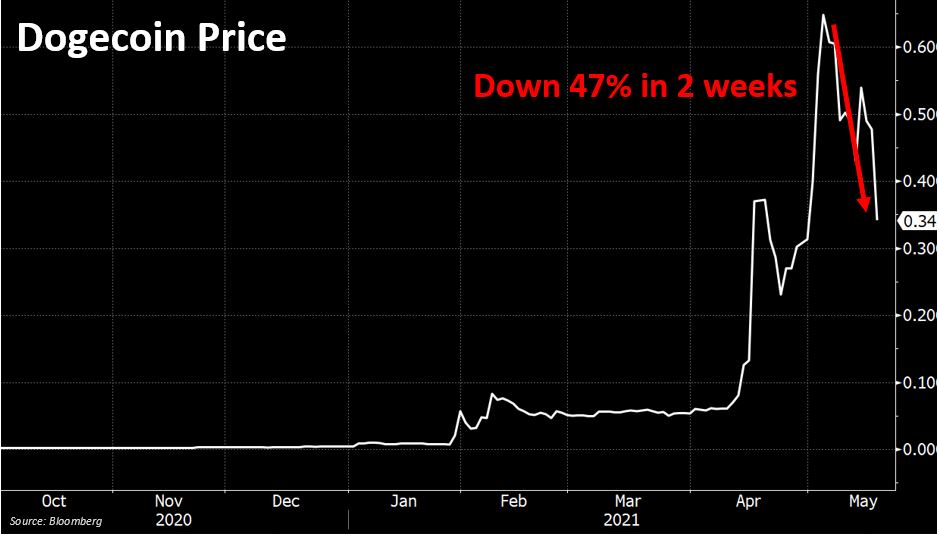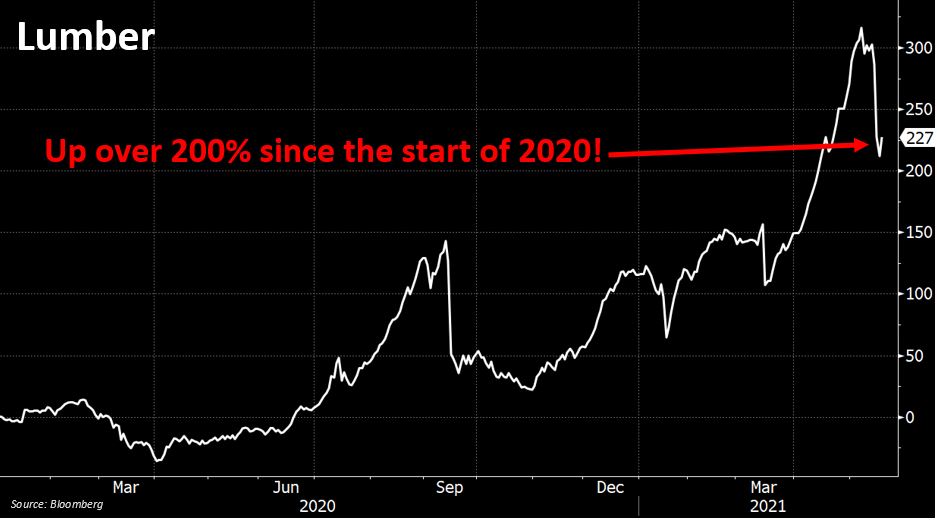Fear Of Missing Out:
A dangerous psychological malady that can cause one to feel that he is missing out on the investment of a lifetime (think dot-coms in 2000, houses in 2007, or Bitcoin today). This fear is usually exacerbated by sensational media headlines. But more recently, FOMO has also been the result of tweets by one iconic billionaire business executive.
Bitcoin, created in 2008, officially began trading in 2009 as an alternate currency — digital, decentralized, and not subject to government regulations.
Since the dawn of Bitcoin, other digital currencies have emerged, most notably Dogecoin and Ethereum.
Digital currencies, also known as crypto-currencies, are undoubtedly here to stay. But, in our opinion, they will probably undergo several more iterations before they truly become ubiquitous (remember “dial-up” internet?).
Let’s face it, most of us are already using a form of digital currency. When over 90% of your purchases are with a credit card, you have essentially given up paper and coins. (Found a nickel on the ground the other day and couldn’t even remember the last time we actually used a nickel to help purchase anything.)
But what you really want to know is . . . does BCWM think you should own Bitcoin (or any other digital currency) as part of your investment portfolio? The answer is NO. At least not yet.
Our business is a fickle one — where you can always look back and see what you “should” have owned. (“It was so obvious, what were we thinking?”) And it certainly would have been nice to have owned Bitcoin the past six months as it climbed from $10,000 to $63,000.

But it wouldn’t have been nearly as much fun to own it the past five weeks as it declined 38% to $39,000.

And keep in mind that Dogecoin was created eight years ago as a joke. Seriously, Dogecoin was quickly put together by a couple of guys trying to make fun of the excessive speculation in crypto-currencies. Here’s one of the founders last week on Twitter, responding to a question about technical considerations when creating Dogecoin:

But this year, Dogecoin increased some 13,000% (a total market value over $90 billion — more than 80% of S&P 500 companies). Some joke.
But then Dogecoin suffered a plunge similar to Bitcoin’s.

Years from now, when digital currencies have evolved into something that is less of a gamble and more of a hedge against fiat currencies, we might become interested. Until then, the primary difference between crypto-currencies and Las Vegas is that when you gamble in Vegas, you get free drinks.
__________________________________________
The Consumer Price Index flashed some notable numbers recently. The index was up 4.2% from a year ago. The biggest increase since 2008.
This has the inflation hawks all in a dither, predicting a long bout of inflation, similar to the 1970’s, a decade that finished with double-digit interest rates. Some of you may recall mortgage rates of 16% in 1981.
At BCWM, we absolutely don’t see our economy headed in that direction. Yes, prices are higher today than a few months ago. And prices might even go higher.
But the big economic question is whether the inflation we are seeing now is going to persist into the future. And although the prices of things have increased more than usual recently, don’t forget that prices actually dropped (deflation!) last spring when COVID first struck and consumers stopped spending. When you measure from an abnormally low starting point, everything looks like it’s going up really fast. (Kind of like saying how the stock market has increased 88% since last March 23, but its “only” up 24% since the previous Feb 19 peak.)
Additionally, certain prices are being dramatically affected by severe short-term imbalances between supply and demand — the most acute example being lumber.
When the pandemic first started, demand for everything (except toilet paper!) dropped suddenly. Given all the uncertainty the world was facing, sawmills reduced lumber production. The industry was further constrained by COVID safety protocols that limited the proximity of workers to one another. And then, when the housing market boomed (because of lower mortgage rates), demand for lumber boomed. Low supply and high demand sent lumber prices skyrocketing.

Eventually, the sawmills will catch up and the price of lumber will come back down to earth (nearly 20% lower in the past two weeks). Similar things are going on with other products, such as semiconductors and used cars. We think this is a temporary increase in price resulting from an economy working its way out of an extreme, albeit short, recession.
While inflation may run hot for a short period of time, we expect that after consumers have spent their government stimulus checks, the U.S. economy will cool off. All the pieces that existed before the pandemic for lower inflation (debt and demographics) are still in play today (and actually even worse because of the pandemic).
__________________________________________
When we started writing this commentary, FOMO was in full effect. But by the time we finished, it was more like GIMO (glad I missed out) because crypto-currencies all crashed. Which is way better than OHNO, where did all my money go?!
This information is provided for general information purposes only and should not be construed as investment, tax, or legal advice. Past performance of any market results is no assurance of future performance. The information contained herein has been obtained from sources deemed reliable but is not guaranteed.
This information is provided for general information purposes only and should not be construed as investment, tax, or legal advice. Past performance of any market results is no assurance of future performance. The information contained herein has been obtained from sources deemed reliable but is not guaranteed.
